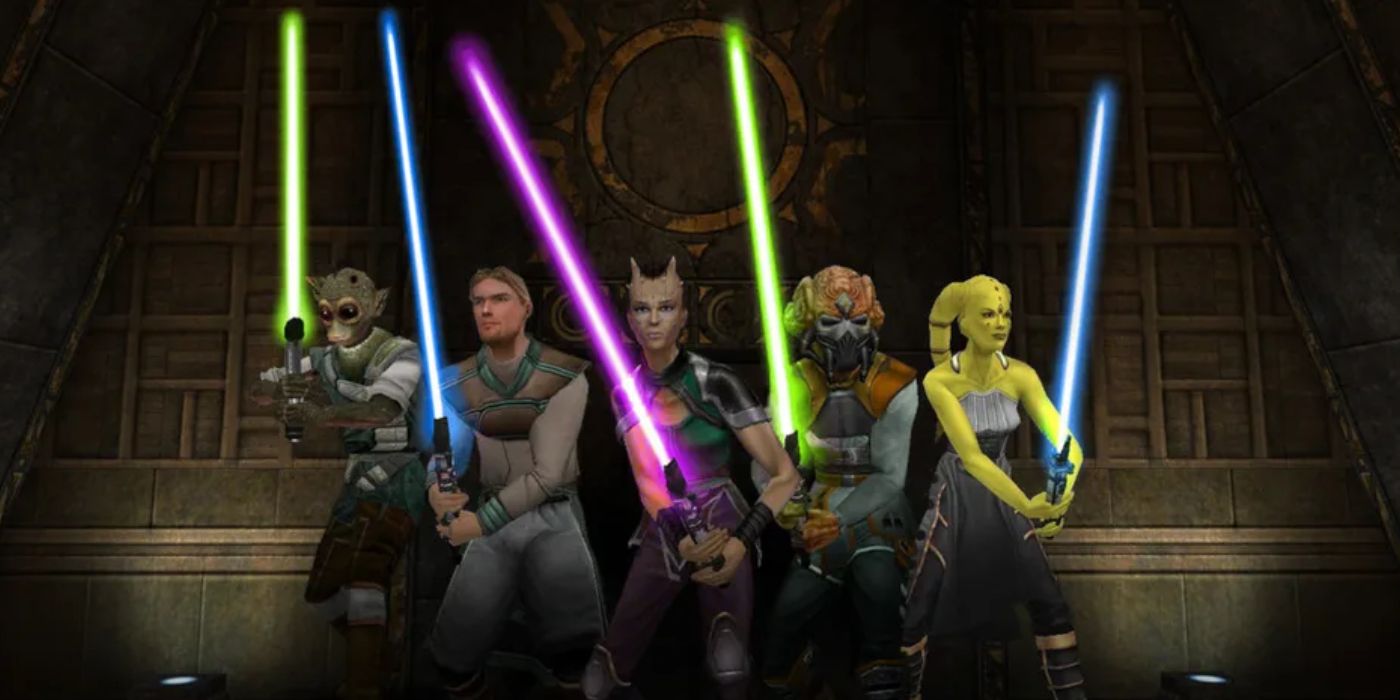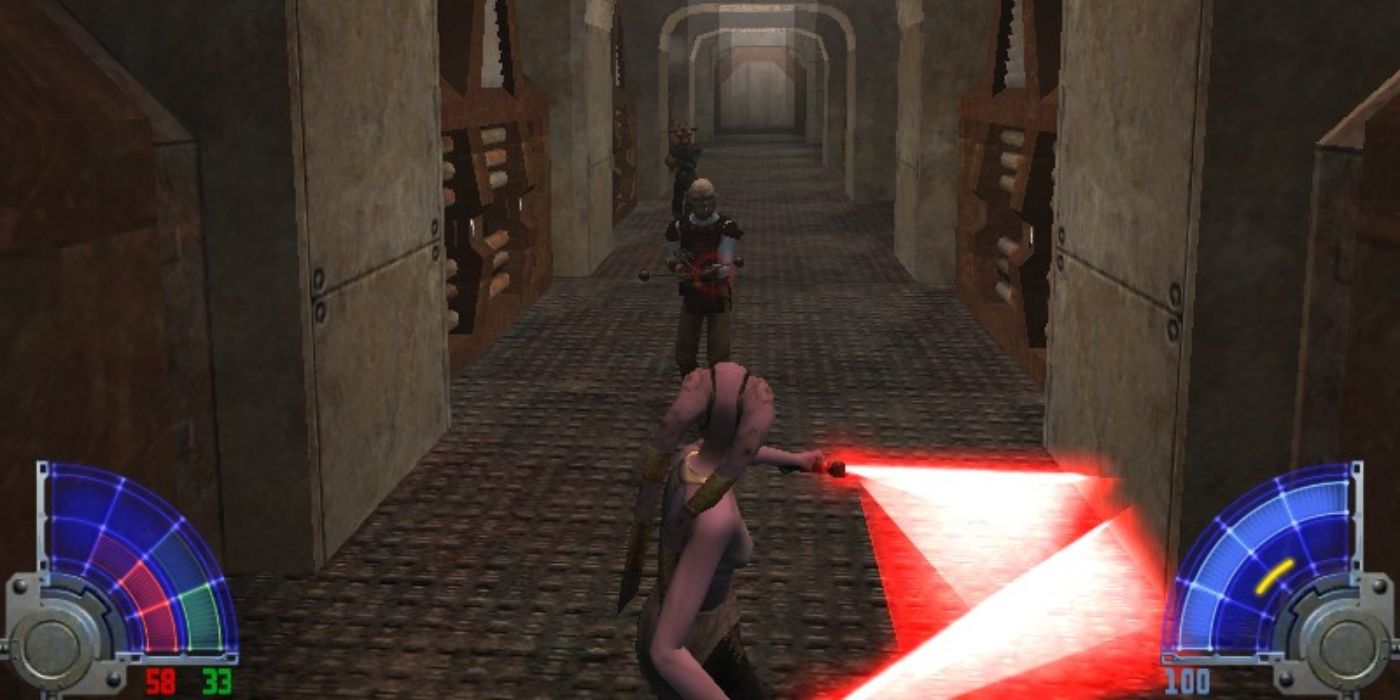Ever since Ben Kenobi faced off against Darth Vader in A New Hope in 1977, Star Wars fans have longed to wield a lightsaber in battle and learn the ways of the Force. Many Star Wars video games feature playable Jedi, but Star Wars Jedi Knight: Jedi Academy is the one that truly got lightsaber combat right, letting players live out those wishes through their screens.
Released in 2003, Jedi Academy is the fourth game in the Dark Forces franchise, directly following Star Wars Jedi Knight 2: Jedi Outcast. The first three games centered around Force-sensitive Rebel mercenary Kyle Katarn and his conflicted feelings about the Force and the Jedi. Jedi Academy is another single-player action adventure game, but this time with a new protagonist: Jaden Korr, a Jedi Padawan under the tutelage of both Kyle and Luke Skywalker at Luke's Jedi Academy on Yavin IV.
Jedi Academy’s lightsaber combat wasn’t born overnight; much of what it does right comes from its predecessor. One common critique of Jedi Outcast was that, while its lightsaber combat was great, players have to wait a long time before receiving Jedi Outcast’s lightsaber, as they don't receive one until the sixth level. Jedi Academy, on the other hand, grants one immediately in the prologue, which ends with a fight against a few Stormtroopers and a Dark Jedi. On paper, it may sound like the game is moving too fast, but that’s the beauty of Jedi Academy’s lightsaber combat - it feels intuitive and natural after only a few minutes.
Jedi Academy’s Lightsaber Combat Is Best Because It's Realistic
In Jedi Academy on PC, players can swing the lightsaber in various directions using left-click and throw it towards opponents with right-click. Moving different directions fluidly changes the attack animation, allowing for attacks from rolls, jumps, flips, and even wall-runs. Deflecting blaster attacks and enemy saber strikes is just a matter of centering the camera on the target.
Pulling directly from the combat of Jedi Outcast, players can also switch between light, medium, and heavy stances, each advantageous in different situations and against the others stances, almost like a game of rock paper scissors. The light stance is typically best against groups of weak opponents, while the heavy stance rewards well-timed, slower strikes with significantly higher damage. Medium offers a blend of the two, and all three stances have their own special attacks and animations.
The best aspect of Jedi Academy’s combat, however, is that enemies are not challenging because of huge health bars, scripted power moves, invincibility frames, or quick-time events: All but the game’s toughest adversaries can be defeated with just a couple well-aimed strikes, making the lightsaber really feel like a blade of pure, white-hot light. It shouldn’t realistically take dozens of hits to defeat someone with a weapon so powerful, but previous games' lightsaber combat just never got this right.
As Jedi Academy progresses, players unlock further customization options for their lightsaber, including the option to wield a double-bladed one like Darth Maul or to dual-wield two like The Clone Wars’ Ahsoka Tano. A healthy mix of upgradeable Force Powers also plays a role in keeping enemies on their toes and gaining situational advantages. Dark Side powers are not restricted to Sith playthroughs, either, so even a Light Jedi can make use of Force Lightning or Choke. Altogether, Star Wars Jedi Knight: Jedi Academy’s lightsaber combat is easy to learn yet challenging to master, and it remains a benchmark for Star Wars games almost 20 years after its release.


